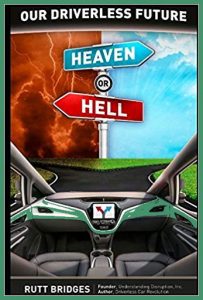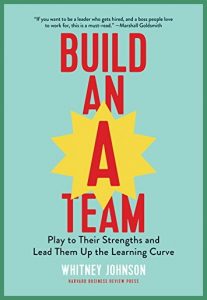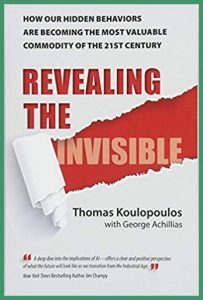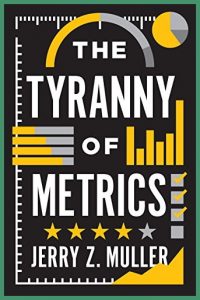Best Summer Reads 2018

It’s elementary: “The more that you read, the more things you will know,” said Dr. Seuss. “The more that you learn, the more places you’ll go.” August and September are great months to exhale and do some mind-stretching via a few great books. Here are five 2018 releases that I highly recommend, presented in alpha-order by the authors’ last names.
 If you’d like to foresense what it will be like to drive in the future…
If you’d like to foresense what it will be like to drive in the future…
Our Driverless Future: Heaven or Hell? by Rutt Bridges (@RuttBridges) [linkUK] [linkUS]
Bridges does a brilliant job of painting a word picture of what our cars, roads, and lives will look like in the future. To use our own Nextsensing words, the author uses “foresensing” to provide a detailed picture of a future world that hinges on “electric Shared Autonomous Vehicles” (eSAVs). What’s that? Before he defines the concept, he does a stellar job of laying out the problem we now have with too many cars and trucks on too few roads — with most of them spewing planet-harmful pollutants into the air. Bridges uses photographs, charts, and other graphics to substantiate his points, as well as many footnotes. He jumps over the current fascination with driverless cars and shows that having more and more vehicles, even driverless, will not solve the real problem of how to get everyone to where they want to go in a timely manner.
“Driverless technology can be the key to conquering congestion — but not if private owners just substitute driverless vehicles for their current cars and continue commuting alone. That won’t take a single car off our highways. And since driverless cars can operate while empty — circling the block to avoid parking fees or driving across town on an errand while you’re at work — it would likely increase the number of vehicles on our already overburdened roads.”
Thus, the need for eSAVs. Says the author, “The future of public transit is driverless pooling services.” Think of Uber or Lyft converted to driverless but also tied to a social network that allows people to hop to wherever they desire in a short time.
In Chapter 5, Bridges provides “A Day In Your Driverless Life,” which gives the reader a sense of what personal and public transportation could be all about. He talks about how everyone would register for an eSAV account, how one will pay with your smartphone, how service will be 24/7, how some rides might actually be without any cost, how eSAVs will be multilingual, and how the routing to your destination will be reliably minimal, timewise (unless you prefer a special route). Bridges also provides a visual glimpse of what an eSAV might look like. Lest you think that this is all blue-sky verbiage, Bridges moves in the next chapter to the “nuts and bolts” of making an eSAV system work.
The author does such a good job, it’s hard for the reader not to say “sign me up” by the end of the book. Says Bridges: “What if public transit provided door-to-door service, was as fast as driving alone, and arrived in about three minutes, any time of the night or day, without the restrictions of fixed routes or schedules? What if your ‘driver’ knew the location of every accident and bottleneck and automatically routed you around all of them? Rather than our current fleets of lumbering, half-empty buses, imagine flexible, adaptive fleets of vehicles made cheaper, safer, and more efficient by being electric, driverless, and shared.”
Bridges is a visionary, but one who is willing to support his vision with ample details and convincing logic. This book is well worth the ride.
 If you are overdue for a personal disruption…
If you are overdue for a personal disruption…
Build an A-Team: Play to Their Strengths and Lead Them Up the Learning Curve by Whitney Johnson (@johnsonwhitney) [linkUK] [linkUS]
Seems to me that the best business books are chock full of memorable stories, ones that tie to the author’s thesis. Whitney Johnson excels at this skill. From the stirring story about the longevity of the company that produces the WD-40 lubricant to the near-the-end story of the vice president at LinkedIn who agreed to go “backwards” in his career in order to broaden his horizons, the author is a powerhouse of memorable stories and memorable lines. But what is the book about? At the highest level, it is of course about building a great work team. But it is so much more than that, as Johnson believes in the principle of “personal disruption.” As she explains: “In Build an A-Team, I lay out a framework for engaging and motivating employees by understanding and managing their individual learning.”
Johnson is an imaginative author. She draws links between Captain James Cook (explorer and cartographer) in the 1700s and the future-fictional James T. Kirk of the Starship Enterprise. Kirk always opened the television show by citing the mission of the “Starship Enterprise” to “go where no man has gone before.” Notes the author: “This is what people want on the job: to boldly go where they haven’t gone before. To venture into uncharted territory. To take themselves and their company where they’ve never been.” Via this technique of telling stories, drawing conclusions, and translating them into workplace applications, Johnson provides both an uplifting book and one that can be utilized the minute the reader gets back to the office. And I believe this book is just as valuable for a first-time manager as it is for a seasoned CEO.
Because Johnson is decidedly for continual human development, she is able to assert and then defend points such as this: “Hiring for potential rather than proficiency is the foundation for building the A-team.” Yet the book goes beyond supporting her ideas in text. I read all of these five books via a Kindle reading device; in her ebook, she provides links to podcast interviews with authorities who can attest to the wisdom of her arguments. Throughout the book, Johnson is clear, blunt, and compelling. For example, she urges managers to hire “where others aren’t,” such as “internal candidates, caregivers returning to the workforce, or military veterans.” Then she provides a detailed checklist of what to ask during a job interview so as to increase the probability of both the person and the company succeeding in the future. In her book, she shows how to manage a new team member over the first year, and she argues that every manager should be a “CEO”: a Chief Encouragement Officer.
This is an optimistic book well-rooted in stories about real people, such as:
Jim Skinner, former CEO of McDonald’s, is a good example of such a “pawn.” Skinner completely lacked the standard CEO credentials. He didn’t have an MBA — he never even graduated from college. His first job was flipping burgers. But over four decades, he was able to assume a variety of roles that eventually led to the C-suite. When his predecessor stepped down due to health problems, he got the top job. McDonald’s did well during his tenure, but Skinner’s most enduring contribution may be his emphasis on talent development.
I simply must cite from her closing pages this quote from writer Anne Lamott. In so many ways, it captures the spirit of this book: “If we stay where we are, where we’re stuck, where we’re comfortable and safe, we die there. We become like mushrooms, living in the dark, with poop up to our chins. If you want to know only what you already know, you’re dying.” Johnson wants you, your team, and your company to grow. Start by reading this book.
 If you don’t know whether your digital self is up to speed…
If you don’t know whether your digital self is up to speed…
Revealing the Invisible: How Our Hidden Behaviors Are Becoming the Most Valuable Commodity of the 21st Century by by Thomas Koulopoulos (@TKspeaks) with George Achillias (@thibetian) [linkUK] [linkUS]
“Your behaviors, in the digital world and in the real world, are being captured at unprecedented rates and then stored and analyzed in vast warehouses that have become digital goldmines,” write the authors in the third paragraph of the book. “You are being bought and sold to the highest bidder, whose objective is to not only understand you but also to predict your behavior. We are giving up who we are, and our most intimate moments, in an invisible exchange for the ability to use products, services, and apps that promise 24/7 knowledge, connectivity, effortless consumerism, and hyper-personalized experiences.”
As soon as I read that, I was hooked to read all of this intriguing book.
The authors are both adept at telling memorable stories, but their real talent lies in getting you to stretch your mind to the realities of a world with a growing population and with a growing database of information about all of us. I admit it: I dropped my jaw when they noted the vast amount of information about each of us that is accumulating in the cloud. Put another way, each of not only has our individual bodies to take care of; there’s also a “digital self” that is out there, tied to our names, our personal identification numbers, our purchase histories, and our social network. The problem? Say the authors:
Simply put, our digital-self’s velocity is much faster than ours. While you stand still, your digital-self is zipping along at light speed gathering, connecting, simulating, and making decisions that are pretty much invisible to you. What this means is that your digital-self can do much more in any interval of time than you can. Ultimately this is why your digital-self can make predictions about what you will do before you do it. It’s already ten steps ahead.
They say this because the increasing use of Artificial Intelligence (AI) means that what you do in the future is, to a great extent, predictable — based on what you have done that has been digitally tracked. Yet, this book is an honest broker for what is happening now, and it foretells the future. That is, you may take some deep gulps when you read the stories and statistics in this book, but you may also find some optimism welling inside you as you press toward the end. Talking about the failures of Kodak and Sears to keep up with their customers, the authors assert, “Simply put, a loyal brand is one that understands your behaviors and their context well enough to be able to anticipate and respond to your preferences and build meaningful and personalized experiences.” Which is to say that the very best companies of the future will use your digital-self to delight your real self.
This is a book about crisis and opportunity, which lays out the potential perils and promises of an ever-larger digital world. Please make sure you do not skip the Appendix: it is an amazing listing of all the kinds of data that could be tied to your digital self. Thinking about this almost-overwhelming list, I read and reread a passage from their final pages. The “invisible” digital part of our lives must be managed properly for the benefit of all of us. A greater digital future is unavoidable: “We do not so much choose to enter the future as we are absorbed by it, swallowed whole. The choice is not in finding a way to avoid or delay it but rather to be observers or active participants in shaping it to our benefit.”
 If you’d like a better performance report…
If you’d like a better performance report…
The Tyranny of Metrics by Jerry Z. Muller (@jerryzmuller) [linkUK] [linkUS]
As I write this, I am trying to think of any job or profession that does not embrace some form of personal measurement. But what happens when mismeasurement wreaks havoc for the firm or the people who work inside it? Jerry Muller was certainly spot-on to identify this problem as it has grown, and his book is a gem. Muller will grab your interest early and fast.
“Used properly, measurement, as we’ll see, can be a good thing. So can transparency,” he writes. “But they can also distort, divert, displace, distract, and discourage. While we are bound to live in an age of measurement, we live in an age of mismeasurement, over-measurement, misleading measurement, and counter-productive measurement. This book is not about the evils of measuring. It is about the unintended negative consequences of trying to substitute standardized measures of performance for personal judgment based on experience. The problem is not measurement, but excessive measurement and inappropriate measurement — not metrics, but metric fixation.”
Written in a style that reflects deep and clear thinking, with ample humility, this small book delivers to the reader an entirely new perspective on whatever kinds of performance reports you or your team live with. Muller is an historian who saw firsthand how metrics can be a very mixed blessing. As department chair at his college, Muller was soon transported far from his academic discipline: “Soon, I found my time increasingly devoted to answering queries for more and more statistical information about the activities of the department, which diverted my time from tasks such as research, teaching, and mentoring faculty.”
But this book is not any kind of personal rant. It is one of the best written arguments I have seen on any subject, providing case studies of the woes of metric fixation in academe, medicine, policing, the military, business and finance, and even philanthropy and foreign aid. He shows, time and again, how a reliance on numbers can destroy any enterprise that, instead, needs a high level of personal judgement to operate at peak efficiency.
I mentally applauded when I read his assertion that simpleton pay-for-performance schemes inside companies can be both limiting and destructive. Regarding the medical profession: “There is now a large social scientific literature on the impact of pay-for-performance and public performance metrics in the United States, the United Kingdom, and elsewhere,” he writes. “What is quite astonishing is how often these techniques — so obviously effective according to economic theory — have no discernable effect on outcomes.”
As Muller notes, “There is nothing intrinsically pernicious about counting and measuring human performance.” And I suspect the reason such measurement is done so poorly at so many levels is because not enough people have read this book!
Muller has done exemplary work here, and it is even more important as the digital age makes numerical measurement that much easier to implement. Chapter 15 on the “Unintended But Predictable Negative Consequences” of metric fixation should be required reading in every elementary management seminar. However, do this only when paired with his “When and How To Use Metrics: A Checklist” (Chapter 16). He ends Chapter 16 with these words:
In the end, there is no silver bullet, no substitute for actually knowing one’s subject and one’s organization, which is partly a matter of experience and partly a matter of unquantifiable skill. Many matters of importance are too subject to judgment and interpretation to be solved by standardized metrics. Ultimately, the issue is not one of metrics versus judgment, but metrics as informing judgment, which includes knowing how much weight to give to metrics, recognizing their characteristic distortions, and appreciating what can’t be measured. In recent decades, too many politicians, business leaders, policymakers, and academic officials have lost sight of that.
Profound. Do not miss this book!
 If you’d want to know more about what women know…
If you’d want to know more about what women know…
The Ambition Decisions: What Women Know About Work, Family, and the Path to Building a Life by Hana Schank (@hanaschank) and Elizabeth Wallace (@lizardwallace) [linkUK] [linkUS]
It started with a small reunion dinner in New York in 2012, all women. Schank and Wallace (good friends since college days) were in their 40s and, as they attest early in the book, facing a spiritual crisis. At one dinner with the two authors and one other woman, this became the talk of the table. “Then the three of us wondered,” the writers begin, “Do you have to have a family to be successful? What, exactly, is success? Is it climbing to the top of your career? Is it climbing to the top of your career while also being married and having children? Is it climbing to a midway point in your career and then saying screw it, this isn’t actually what I wanted to do, and pivoting to something else that truly makes you happy?”
Those questions ultimately led to a survey (via interviews) of as many of their sorority sisters from Northwestern University as they could manage. By the end of their research they had spent time with 43 women who were in their sorority at Northwestern between 1989 and 1993. The authors had had no contact with most of the women for more than 20 years.
This was no geocentric study. “Our college friends are geographically diverse, spanning five countries and twenty-one [US] states.” Yet, the authors make no pretense that the book represents the thinking of all women everywhere. However, I see the book as a breakthrough for three reasons.
- First, it is a book about “real women.” By that, I only mean that the group of women in this book were neither princesses or national presidents. The survey deals with women who dealt with and spoke about the work world most of us would know well.
- Second, because of their interview technique, the authors were able to divide the women into four categories, four distinct career paths that could help guide the thinking of today’s college women. The four categories come across as natural, easy-to-understand and helpful options for any woman (at least, to this male).
- And that’s my third reason for liking this book enormously. This book could be a real eye-opener for any male manager who has only a stereotype of women inside the company. The book excels at showing how women, just like men, can have differing values as they grow and evolve. Men reading this book should gain a far better way to think about the women that they supervise and work with as team members — although I doubt the authors wrote it as any kind of instruction guide for men. And, most importantly, women managers will, too!
What you will find in this book are case studies, women who typify the category being discussed. The women presented, in every case, have impressive and memorable stories to tell. Then, at the end of each major chapter, Schank and Wallace provide “Here’s what we know about” the category being studied, such as “High Achievers.” These summaries are extremely helpful as both markers of the reader’s journey through the book and as easy-to-remember summaries of what makes each category distinct.
Please do not think that this is a simple survey-and-sort kind of book. It’s much more personal, and Schank and Wallace make sure that the subject of ambition serves as a touchstone for each of the categories. Just as they tackle the question of what success is, they do an equally fine job helping the reader to understand exactly what ambition is, while allowing that the women who do not aspire to be CEO are not without ambition, as there are multiple forms of that trait in people. The authors also discuss how marriages and partnerships and raising families can affect decisions about careers. They even talk about how the expectations of parents can complicate the choices a woman makes.
“Tour de force” is often overused when talking about books, but what they have done with this book is to allow the reader (female or male) to explore so many topics that for too many people are unexplored. Toward the end of the book, the authors make a great statement about the lives of everyone: “While none of us had become Beyoncé, Sheryl Sandberg, or Condoleezza Rice (surprise! No one turned out to be a platinum recording artist, the COO of Facebook, or secretary of state!) their stories were far from boring — and every one of them resonated with our own experiences.” Far from boring. That, in my view, is what all of our lives should aspire to; and this book, with a keen and wise focus on 43 women, was at all times far from boring.
 Joseph Pistrui (@nextsensing) is Professor of Entrepreneurial Management at IE Business School in Madrid. He also leads the global Nextsensing Project, which he founded in 2012.
Joseph Pistrui (@nextsensing) is Professor of Entrepreneurial Management at IE Business School in Madrid. He also leads the global Nextsensing Project, which he founded in 2012.
